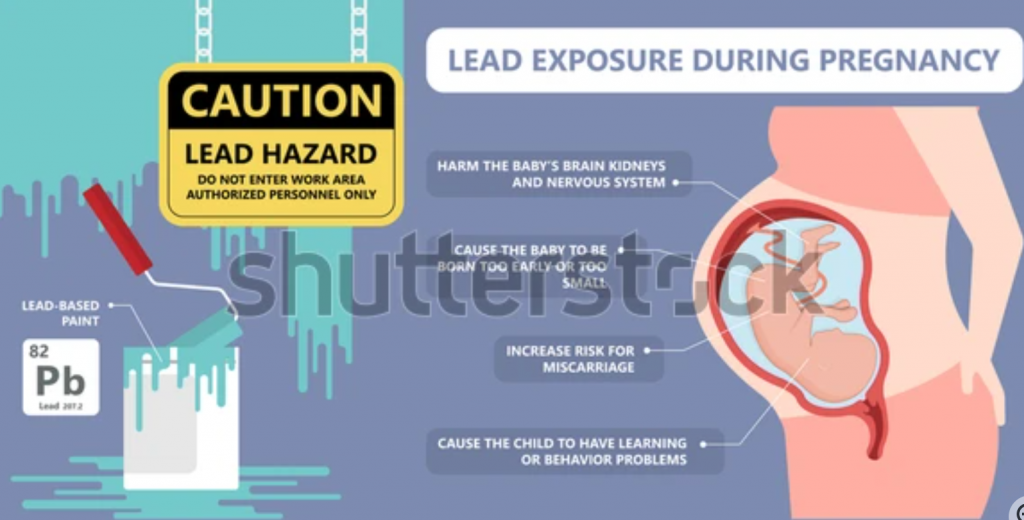Lead in fine particles can be inhaled and absorbed directly through the lungs or ingested and absorbed by the GI tract (Agency for Toxic Substances and Disease Registry.2019). Lead is a cation or contains a positive charge. It is attracted to anions or negatively charged particles in the body. Proteins are negatively charged; as a result, the lead will bind to protein and cause them to not work properly. Lead also functions similar to calcium in our bodies; as a result, lead deposits in the bones (Allmann and Welsh). As we age, our bones demineralize, which increases the release of lead from bone tissue in the body. Lead can also be stored in our blood and tissues (Centers for Disease Control and Prevention.2021). The blood lead levels are lead levels in the blood measured in micrograms per deciliter (mcg/dL). Blood levels for a child that are considered high are 5 mcg/dL. There is no safe level of lead for children. In adults, blood lead levels from 10 to 25 are considered a sign you are regularly exposed to lead (WebMD. 2022).
Due to lead’s chemical structure, it can cross the placenta and blood-brain barrier. The blood-brain barrier is a network in the brain that separates the circulating blood from the brain fluid. High exposure to lead can cause cerebral edema, brain damage, and cognitive ability (Fahel. 2016.). Lead can also cross the placenta, exposing lead to damage of the developing baby’s nervous system and IQ (Centers for Disease Control and Prevention.2021).

Lead poisoning can occur acutely or chronically. Acute is a high dose of lead over a short period, while chronic is a lower dose over a more extended period of time. The symptoms of lead poisoning include stomach pain, joint pain, headaches, neurotoxicity, anemia. Prolonged exposure may lead to kidney dysfunction, heart disease, and reduced fertility (Centers for Disease Control and Prevention).
Children are at a higher risk to lead compared to adults. Their bodies are growing and developing and are more likely to absorb higher rates of lead. Lead exposure to children can result in permanent nervous system damage, developmental delays, lower IQ, weight loss, stomach pain, and seizures (Mayo Clinic).
Current treatments for lead include removing the lead source, chelation therapy, and EDTA chelation therapy. Chelation therapy helps solubilize and bind lead in your body, which can be excreted out through urine (Mayo Clinic).
Allmann, E. and E. Welsh. (2019, November 26) Lead Poisoning: Heavy Metal Episode. Apple Podcast. This podcast will kill you. https://podcasts.apple.com/us/podcast/this-podcast-will-kill-you/id1299915173?mt=2
WebMD. Feb 10, 2022. Lead Blood Test: What to Expect
Mayo Clinic. Jan 21, 2022. Lead poisoning
https://www.mayoclinic.org/diseases-conditions/lead-poisoning/diagnosis-treatment/drc-20354723
Agency for Toxic Substances and Disease Registry. (July 2, 2019). Environmental Health and Medicine Education. https://www.atsdr.cdc.gov/csem/leadtoxicity/what_lead.html
Centers for Disease Control and Prevention. (January 28, 2022). Lead in Paint.
Fahel, D. 2016. Chronic Lead Exposure: A Non Traumatic Brain Injury.